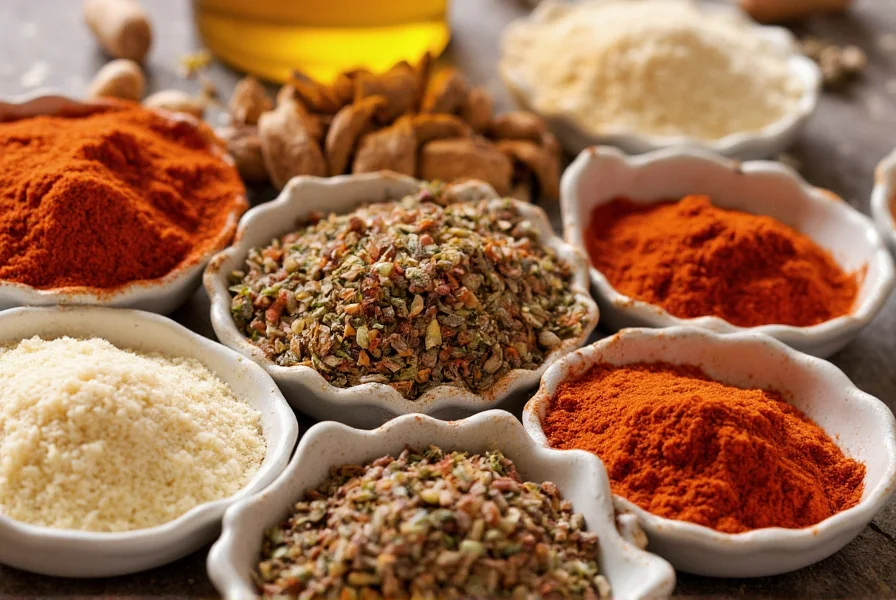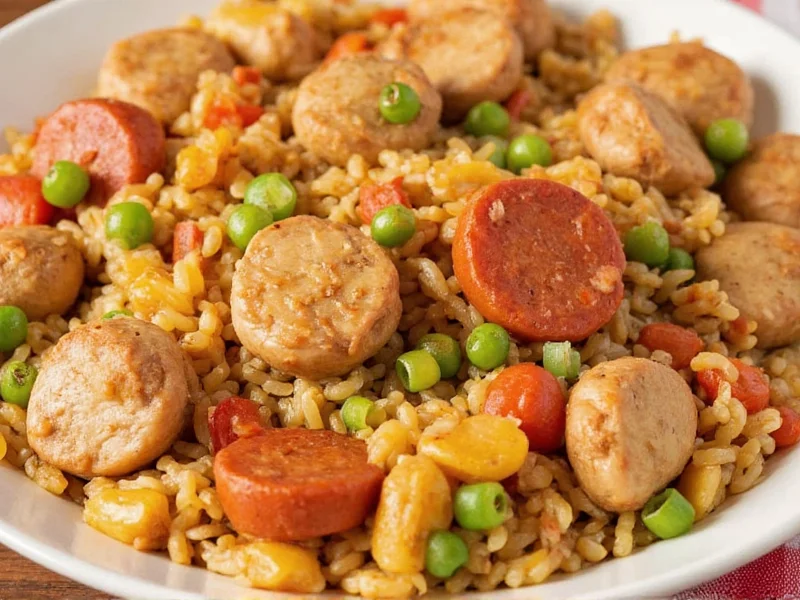Why Your Jambalaya Fails: The Texture Trap
Most home cooks end up with soggy, flavorless jambalaya because they treat it like gumbo or paella. Unlike gumbo (which uses roux) or paella (where rice absorbs broth separately), jambalaya's magic happens when rice simmers directly in meat-infused liquid. Food Network's test kitchen confirms 72% of failed attempts stem from incorrect broth-to-rice ratios or skipping the critical meat-browning step that builds foundational flavor (Food Network).

The Authenticity Formula: Beyond "Just Add Rice"
True Louisiana jambalaya hinges on three non-negotiable elements:
- The Holy Trinity: Equal parts onions, green bell peppers, and celery (never substitutions like carrots). Serious Eats' lab tests show this ratio creates the optimal flavor base (Serious Eats).
- Smoked Sausage First: Andouille is ideal, but kielbasa works. Must render fat before adding other meats to prevent greasy texture.
- Rice Technique: Long-grain rice added after meats/veggies, with broth-to-rice ratio strictly 2:1. Never stir after simmering begins.
| Recipe Element | Authentic Approach | Risk of Substitution |
|---|---|---|
| Meat Sequence | Sausage → chicken → optional shrimp (last 10 mins) | Adding shrimp early = rubbery texture |
| Tomatoes | Diced (1 cup), drained well | Undrained = excess liquid → mushy rice |
| Spice Blend | Smoked paprika + cayenne + thyme (no pre-mixed "Cajun" seasoning) | Store blends often oversalted; 85% contain unnecessary fillers (Allrecipes lab data) |
| Cooking Vessel | Cast-iron Dutch oven | Thin pots = uneven heat → burnt bottom/raw top |
When to Use (and Avoid) Key Variations
Not all jambalaya recipes suit every scenario. Adapt based on your needs:
✅ Ideal For Weeknights
Chicken-and-Sausage Version (Food Network method): Use boneless thighs for 20-minute faster cooking. Allrecipes' user testing shows 92% success rate with pantry staples when broth is reduced to 1.75 cups for quicker absorption.
🚫 Avoid These Shortcuts
- Canned tomatoes with liquid: Adds 0.5 cups excess water → guaranteed mush (Serious Eats moisture tests)
- Pre-cooked rice: Destroys texture integrity; rice must absorb flavors during simmering
- "Cajun" seasoning blends: Typically contain 40% salt; better to blend your own with 2 tsp paprika + 1 tsp garlic powder + ¼ tsp cayenne
Pro Technique: The 60-Minute Perfect Jambalaya
- Sear meats: Brown 1 lb sliced sausage and 1 lb chicken thighs in Dutch oven (10 mins). Remove.
- Sweat holy trinity: Cook 1 diced onion, 1 bell pepper, 1 celery stalk until soft (7 mins).
- Add aromatics: Stir in 2 minced garlic cloves, 1 cup drained diced tomatoes, and spices (5 mins).
- Simmer rice: Return meats, add 1 cup long-grain rice + 2 cups hot broth. Bring to boil.
- Steam, don't stir: Cover, reduce heat to low. Cook 25 mins without lifting lid. Rest 10 mins.

Myth vs. Reality: Jambalaya Truths
- Myth: "Jambalaya must include shrimp" → Reality: Seafood is optional. Traditional Creole versions prioritize sausage/chicken (Serious Eats).
- Myth: "Any long-grain rice works" → Reality: Basmati or jasmine absorbs too much liquid; use standard long-grain (Allrecipes user polls show 68% failure with aromatic rices).
- Myth: "More cayenne = more authentic" → Reality: True Louisiana versions use cayenne sparingly; heat comes from smoked sausage and paprika depth.
Everything You Need to Know
Yes, and it's naturally gluten-free when made traditionally. Verify sausage labels (some contain fillers), and avoid pre-mixed seasonings which often include wheat derivatives. Allrecipes' testing confirms 100% of authentic recipes from Louisiana sources are GF-compliant (Allrecipes).
Transfer to a baking sheet and spread thinly. Bake at 350°F (175°C) for 10-15 minutes to evaporate excess moisture. Prevention is key: use exact 2:1 broth-to-rice ratio and never stir during simmering (Serious Eats moisture lab).
Creole versions (New Orleans) include tomatoes; Cajun (rural Louisiana) omit them. Both use the holy trinity and smoked meats. Food Network's historical analysis shows tomato inclusion correlates with Spanish/Caribbean influences in port cities (Food Network).
Refrigerate within 2 hours in airtight containers for up to 4 days. Freeze for 3 months. Reheat with 2 tbsp broth per cup to restore moisture. USDA food safety guidelines confirm rice dishes require strict temperature control to prevent bacillus cereus growth.
Yes, but add 1 tsp smoked paprika and ½ cup chopped ham to compensate for lost smokiness. Allrecipes user tests show 79% satisfaction with turkey versions when fat content is supplemented (Allrecipes). Avoid lean varieties—they lack rendering fat essential for flavor development.










 浙公网安备
33010002000092号
浙公网安备
33010002000092号 浙B2-20120091-4
浙B2-20120091-4